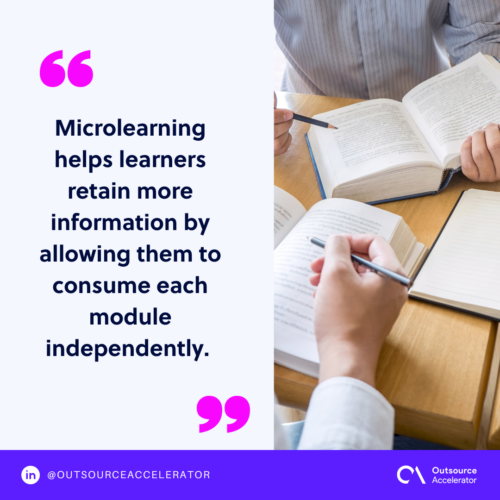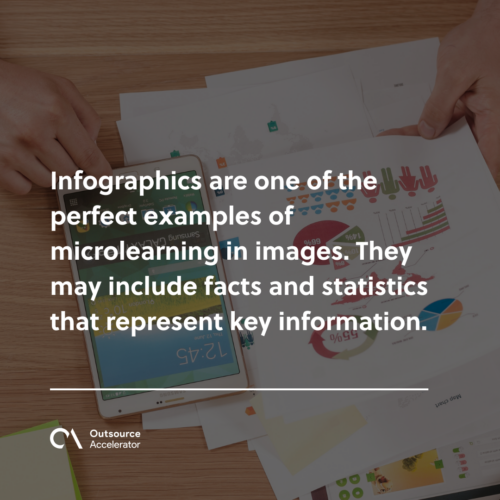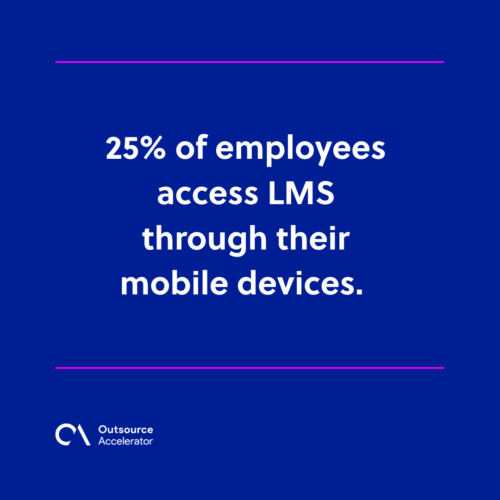Microlearning: What you need to know

Traditional learning has long been established and implemented globally.
A qualified instructor shares information with students at one—or two-hour intervals. The pupils’ knowledge and skills are assessed through activities and written tests.
This method of education has proven itself to be effective for many learners in the past. However, times have changed, and so have students’ attention spans.
With the rise of social media and fast entertainment, the average attention span of humans has increasingly deteriorated.
To combat this, the concept of microlearning was introduced.
Microlearning is a way of distributing educational content in bite-sized chunks. It aims to capture and maintain a learner’s attention while teaching them.
This article explores the concept of microlearning, particularly its definition, benefits, challenges, and examples. You will also learn in this article the best practices when creating a microlearning program for training your employees.
What is microlearning?
Microlearning is an approach to education where information is given out in small doses.
Micro lessons are designed to be easily digested and able to be completed within a short amount of time – usually under ten minutes.
Microlearning usually requires little effort from learners and involves simple topics.
These traits make microlearning suitable for portable learning.

But how does microlearning work? Why is it considered a solution to combat learners’ deteriorating attention spans?
When a learner first discovers something, they retain all relevant details. Over time, memory retention starts to decline.
Microlearning enhances learner engagement, results in better knowledge retention, and ultimately contributes to a more effective and streamlined compliance training process.
However, with microlearning, learners can repeatedly recall different parts of the content as time passes, retaining more of the information they learned.
This process ultimately causes an improvement in a learner’s knowledge retention and productivity.
The benefits of microlearning
Microlearning offers various advantages to employers and their workers.
In the realm of workplace learning, microlearning stands out for its numerous benefits, making it a valuable tool for professional development.
Here are some of them:
Easy delivery
With the right choice of tools, creating microlearning courses is straightforward.
It’ll save your company valuable time that may have been spent on setting up in-person training sessions or writing lengthy compliance manuals.
Quicker completion
Microlearning is quick and easy to complete by nature. It is designed to teach new skills to learners or refresh their knowledge in only a few minutes.
Improved engagement
Microlearning modules are quick to complete and increase engagement by emulating the addictive content that is regularly consumed on social media.
Short videos, for instance, are more effective in getting learners’ attention than slide presentations and 30-page reading materials.
Better retention
Learners who use microlearning are better able to identify the necessary course of action and the desired learning outcomes.
Due to the accessibility of the information, microlearning helps learners retain more information by allowing them to consume each module independently.

Improved on-the-job training
Microlearning allows trainees to learn in a short amount of time without disrupting their daily tasks.
Offers flexibility to learners
Traditional learning management system (LMS) courses are usually rigid in structure and do not acknowledge that every person learns differently regarding pace and learning styles.
One of the key benefits of microlearning is its flexibility, as it enables professionals to enhance their skills at their own pace.
Microlearning, on the other hand, enables self-paced learning. Due to this, learners complete and revisit training modules whenever it’s convenient for them.
This flexibility increases completion rates. In addition, it guarantees that training remains an opportunity to learn instead of a counterproductive activity.
The challenges in microlearning
Microlearning is an effective solution to the decline of learners’ attention spans, but it’s far from perfect.
Microlearning poses challenges to employers. Some of these are:
Conflict in complex topics and in-depth training
Microlearning conveys information quickly and effectively but may not be suited for complex topics.
If learners require longer, in-depth training on a skill or topic, another choice of medium would be more appropriate for them.
Another obstacle lies in designing interactive and engaging microlearning materials that maintain learners’ interest and motivation throughout the learning process.
Managing and maintaining a vast amount of content
Dividing broad topics into numerous, bite-sized lessons means creating, managing, and maintaining vast content.
If the organization of these is not kept up from the start, confusion may arise, along with loss or unnecessary duplication of files.
Additional expertise may be required
From the consumer’s side, microlearning poses little to no challenges. However, the same cannot always be said on the creator’s side.
Additional expertise may be required for creating microlearning modules.
It takes a true expert to break topics down into short lessons while maintaining their effectiveness and long-term retention of learners.
These challenges aren’t impossible to overcome nor make microlearning completely undesirable, but it’s important to note them.
To give you some ideas and inspiration for creating your company’s LMS, the next section discusses some examples of microlearning.
Examples of microlearning
Microlearning content can take on different forms. The only constant across these forms is that they must be short and concise.
Listed below are the usual formats of microlearning and some real-life examples:
Texts
Microlearning texts may come in short paragraphs, messages, or hints. Texts should be simple and only a few sentences long. Otherwise, learners might lose interest.
An example of microlearning text is Merriam-Webster’s Word of the Day. Each entry includes one word and a few sentences explaining its definition.
It’s quick, educational, and comes only once a day. This allows the app’s users to learn a new word daily and practice using it in their interactions throughout the day.
Images
Microlearning images are static visuals composed of complex ideas made simple. It applies visual communication techniques to make grasping ideas more simple and effective.
Particularly, this form uses minimal text and graphics.
Infographics are one of the perfect examples of microlearning in images. They may include facts and statistics that represent key information.
Some microlearning images may also come in the form of instructions.
In case of earthquakes, for instance, people are told to drop, cover, and hold on using a graphic. Images referred to here usually incorporate text and visual representations of a character.

Audio
You can use audio clips such as speech snippets or music for microlearning. With these, you can assess learners’ listening comprehension while keeping them engaged.
Videos
Short and snappy video clips are a great way to explain concepts within a few minutes. You can also repurpose microlearning images by inserting them into a relevant video.
Audio-visual materials are one of the most commonly used forms of microlearning content. They appeal to auditory and visual learners and meet the needs of various audiences.
With videos, learners can rewind and rewatch as often as necessary. This contributes to the self-paced and flexible nature of microlearning.
Microlearning videos are often optimized for mobile devices, enabling learners to access information conveniently on the go.
Interactive elements
Compared to long, written examinations, work-related assessments can be transformed into games or quizzes.
These are engaging and demand a high level of interaction, which makes them well-suited for kinesthetic learners with especially short attention spans.
An example of interactive microlearning is Duolingo’s language lessons.
The whole application itself embodies gamification, with the scoring of learners and using levels as representation for progress.
Microlearning best practices
When implementing microlearning best practices, a well-thought-out microlearning strategy is essential for success.
Identify objectives
One of the most important tasks when creating a microlearning program involves setting clear objectives regarding the project.
Gather your team and identify factors such as the topics that should be included, the skills learners should possess at the end, and the possible mistakes in creating the program that should be avoided.
Set a brainstorming meeting to identify objectives to put your team on the same page.
It is also an opportunity to raise potential concerns and solutions.
Overall, this practice will facilitate a more harmonious process for creating your microlearning program and lessen misunderstandings within your team.
Use gamification
Remember to include interactive content in your microlearning lessons. This increases the engagement and enjoyment of learners.
Naturally, they will be encouraged to study more if they have fun learning.
Incorporate micro assessments
Similar to the lessons themselves, micro assessments are delivered in small chunks. They may take the form of short quizzes or pop-up questions.
These help determine if a learner understands the topic they are currently learning about.
Choose the most appropriate and effective format
While it is important to include micro assessments, text-based quizzes are not always the way to go – especially when they are overused.
When aiming to achieve a specific learning outcome, it is essential to carefully choose the most appropriate and effective format for delivering the content.
Sometimes, it is good to take a different approach to creating assessments. You can make an image-based quiz or test miming a popular game show’s format.
Short attention spans and a constant need for entertainment are major reasons microlearning is becoming necessary. It’s good to implement ideas that combat these factors.
Keep it straightforward
A micro lesson should only take a few minutes to complete. There’s no need to include irrelevant details in them. Unnecessary information will increase the likelihood of learners losing interest.
When setting a learning objective for a microlearning module, it is essential to be specific and focused on the outcome desired.
Assure mobile-friendliness
25% of employees access LMS through their mobile devices.
Ensure your program and lessons are mobile-friendly to cater to your audience’s needs.

Microlearning cultivates a competitive workforce
The benefits of microlearning make it an important asset to businesses.
Training new employees and keeping existing ones in check can be challenging to accomplish regularly. Without microlearning, these efforts may only be in vain.
Microlearning allows for better knowledge retention of trainees, even during this age of limited attention spans.
It’s also a more affordable alternative for training employees.
In addition, microlearning courses are quicker, both in creation and completion. They offer learners improved engagement and flexibility, making them the more desirable option over traditional learning.
By following the best practices mentioned in this article when creating a microlearning course, you ensure effectiveness in training your staff.







 Independent
Independent




